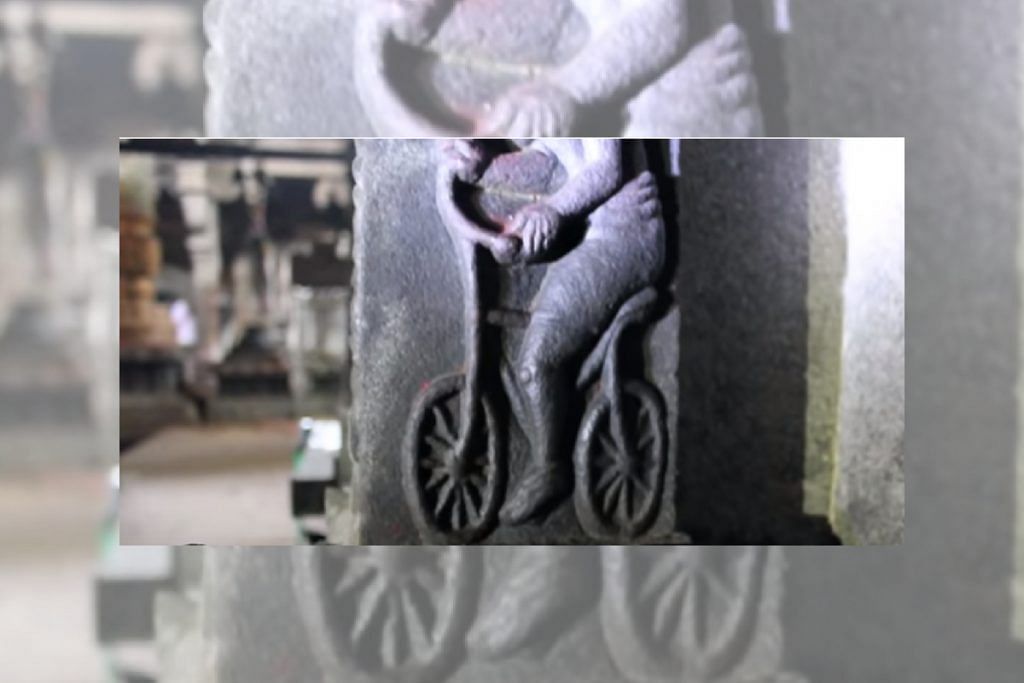The viral Tamil Nadu bicycle inscription on a 7th century temple is probably the handiwork of mischievous restoration.
Hyderabad: An inscription of a man riding a bicycle in an ancient temple in Tamil Nadu has turned a few heads after going viral and being shared by international media outlets.
The inscription, showing a mustachioed man riding a bicycle, was found on a wall of the Panchavarnaswamy Temple located in Woraiyur, Tamil Nadu. The temple can be dated back to the 7th century, making the bicycle (invented in the 19th century in Germany) an obvious anachronism.
A video posted on YouTube by a travel channel shows a man visiting the temple, and questioning whether the inscription of the bicycle proves “advanced ancient technology”. With nearly 1,00,000 views, the video was picked up and shared by media outlets like the Express, Daily Star and Daily Mirror in the UK and the Chinese magazine Sia.
The “historical bombshell” has struck many people as odd, including the tabloid Daily Mirror, which states that the temple “may have predicted the arrival of the bike by hundreds of years”. Even the temple’s Wikipedia page describes the inscription as “notable and amazing”. Conspiracy-theory websites like Texas UFO Sightings have also shared the image as proof of supernatural interference.
However, the same temple made news in 2015 when a trio of scholars was able to provide an explanation on why the inscription exists. Part of a team working to chronicle the temple heritage of South India, Dr. R. Kalaikovan had told The Hindu that he found the inscription in the 1980s, adding that the bicycle was inscribed during renovation work in the 1920s. Bicycles would have been a novelty at the time in colonial-era India and a sculptor would have taken the opportunity to record it, Kalaikovan had said.
Similar inexplicable inscriptions have been chalked down to being a result of mischievous restoration work. For example, an astronaut was carved into the New Cathedral of Salamanca, Spain when it was restored in 1992. A lion eating an ice cream and a mobile phone were added to the walls of a temple in Karnataka and fake news of these carvings went viral in 2017.
This article has been done in collaboration with SM Hoaxslayer.
